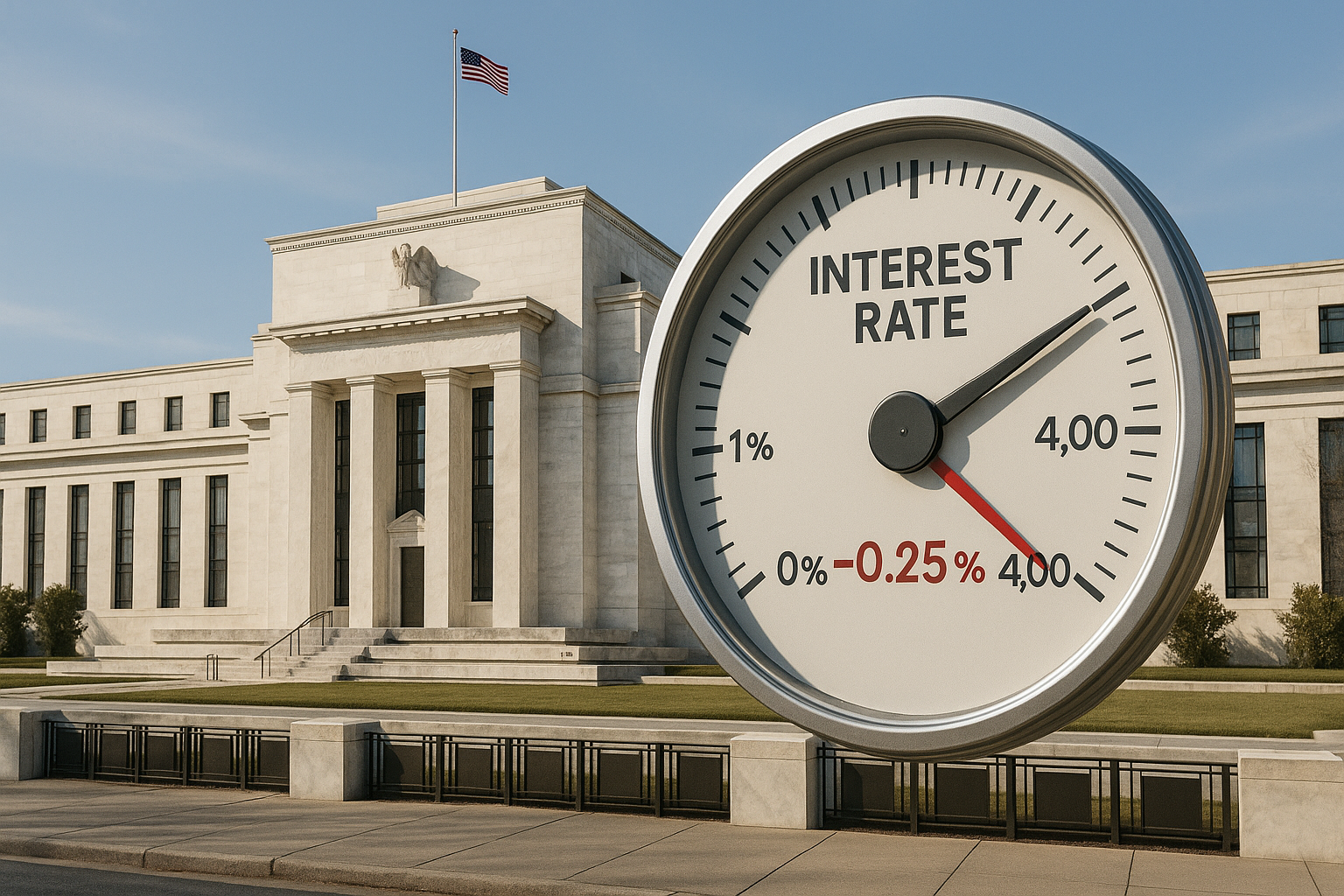The Federal Reserve has finally budged. After months of playing the waiting game, they cut interest rates by a quarter point yesterday in a lopsided 11-1 vote that revealed more about the central bank's internal tensions than they probably intended.
This modest trim brings rates down to a range of 4.00% to 4.25% — the first reduction since December. But let's be honest, this move was about as surprising as finding out politicians sometimes bend the truth. Markets had essentially guaranteed this outcome weeks ago.
What's actually interesting here isn't the cut itself. It's the dissent.
Stephen Miran, fresh face at the Fed table, pushed for a bolder half-point slash right out of the gate. Talk about making a first impression! It's like showing up to your new job and immediately suggesting everyone's been doing it wrong. I've covered Fed transitions since 2015, and this kind of early contrarianism is... unusual, to say the least.
Meanwhile, the projections now hint at two more cuts coming down the pike this year. The infamous "dot plot" (that confusing chart showing where each Fed member thinks rates are heading) has shifted in a distinctly dovish direction.
Their language about the job market tells the real story. Gone is their confident assessment of "solid" employment conditions. Now they're merely noting unemployment "remains low" despite having "edged up." In Fed-speak, that's practically sounding alarm bells.
The Two-Speed Economy Headache
The Fed's current dilemma reminds me of trying to drive a car where the front and back wheels are moving at different speeds. Consumer spending remains surprisingly resilient (I've spoken with several retailers who confirm their numbers haven't cratered), while manufacturing and housing have been struggling for months.
Different parts of the economy feel interest rate changes in different ways and at different times. Housing feels it first through mortgage rates—and boy, have they felt it. Manufacturing follows as companies reconsider big investments. Consumer spending? That's typically the last domino to fall.
This creates a nasty timing problem. Cut rates too soon and inflation might roar back. Cut too late... well, then you're chasing a recession downhill with no brakes.
The unemployment rate sits at 4.2% currently. That's historically pretty good! But it's the direction that keeps Fed officials up at night. Once unemployment starts climbing, it rarely stops at a comfortable level before continuing upward. It's like trying to slightly deflate a balloon with a pin—good luck with that controlled descent.
Powell's Cautious Choreography
What we're witnessing is Federal Reserve Chair Jerome Powell's attempt at what I'll call "gradualism with gravitas." A carefully choreographed series of modest cuts designed to ease financial conditions without triggering either a meltdown or an inflation comeback.
Look, historically speaking, when the Fed starts cutting, they usually cut big. The typical easing cycle since 1980 has slashed rates by around 525 basis points. We're currently looking at projections for just 75 basis points of easing through year-end. That's... not much.
Is this time genuinely different? Maybe. The Fed clearly thinks they can achieve the mythical "soft landing" with just a few minor adjustments to the controls. It's a plausible theory—but one that assumes the economy balances easily with just a slight nudge rather than needing a forceful correction.
The market reaction was telling. Treasury yields dipped then stabilized. Stocks moved without drama. This measured response suggests Powell's communication strategy has successfully prevented major surprises. (Having attended several of his press conferences, I've noticed his increasing comfort with nuanced messaging.)
What remains to be seen is whether this baby-step approach will actually prevent further labor market deterioration. Sometimes being overly cautious just means you fall in slow motion instead of all at once.
The Fed's watching the incoming data like... well, not hawks exactly. More like anxious parents at their kid's first swimming lesson—hoping everything goes fine but ready to jump in at the first sign of trouble.
For now, they're betting they can thread the needle. History suggests that's tough to pull off, but I suppose that's why they get the big government salaries. Which aren't actually that big, if we're being honest about it.
But you know what I mean.
